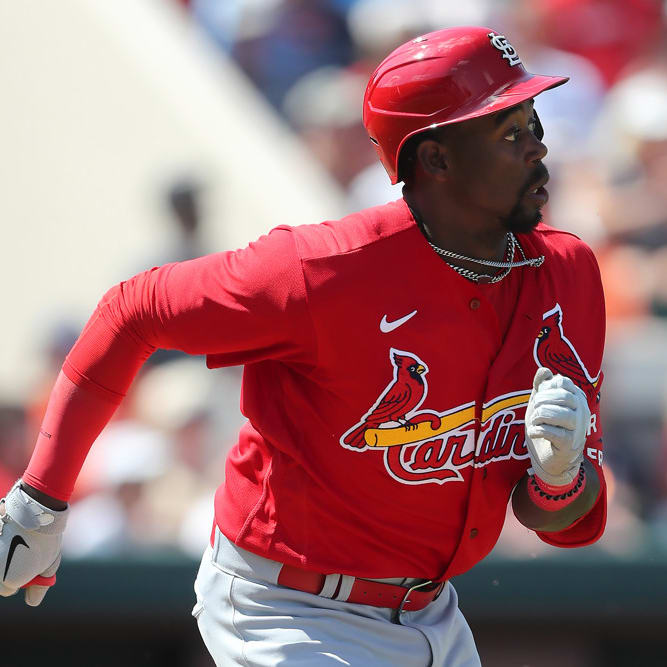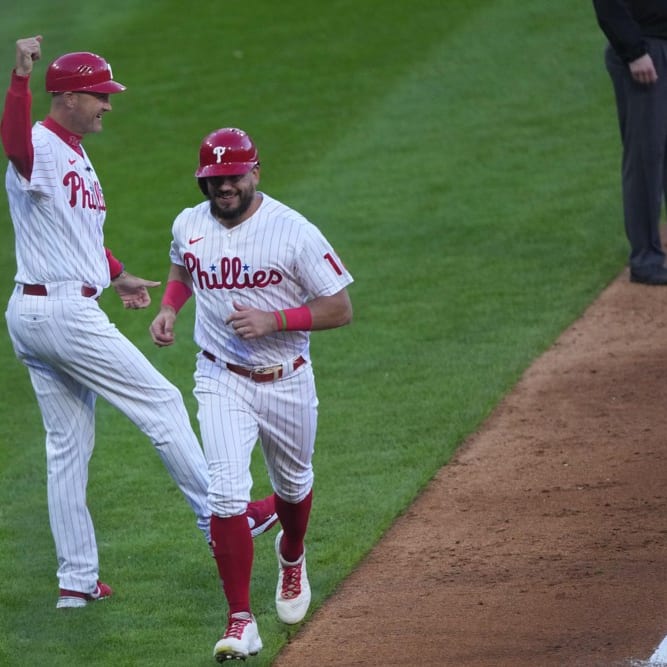This article is part of our MLB Barometer series.
Before we get to our regularly scheduled MLB Barometer, a quick detour to the World Baseball Classic, which has occupied much of my baseball brain over the past week. In a world where we're used to seeing the best baseball teams gradually separate themselves from the pack over the course of 162 games, it can be a shock to see just how much one game can change a team's outlook in a format like this.
Toss in the fact that players are at varying levels of individual preparedness at this stage of March, and the stage is set for a tournament full of upsets, even in an event that features firefighters facing off against Shohei Ohtani. As of writing, we've already seen Australia pull off a huge upset over South Korea to advance to the quarterfinals, while the two biggest pre-tournament favorites, the USA and the Dominican Republic, have dropped games to Mexico and Venezuela, respectively, putting their advancement at risk. We've also had an entire pool finish with 2-2 records, sending us to a runs-allowed tiebreaker. If you like baseball and like chaos and aren't already following the tournament, I couldn't recommend it more highly.
For now, though, we'll return to our fantasy-focused programming. This is a great point in draft season to check in on ADP changes, as weeks of spring training games have adjusted expectations for several players. If your league drafts in the second half of March, you'll likely find that the default ADP data
Before we get to our regularly scheduled MLB Barometer, a quick detour to the World Baseball Classic, which has occupied much of my baseball brain over the past week. In a world where we're used to seeing the best baseball teams gradually separate themselves from the pack over the course of 162 games, it can be a shock to see just how much one game can change a team's outlook in a format like this.
Toss in the fact that players are at varying levels of individual preparedness at this stage of March, and the stage is set for a tournament full of upsets, even in an event that features firefighters facing off against Shohei Ohtani. As of writing, we've already seen Australia pull off a huge upset over South Korea to advance to the quarterfinals, while the two biggest pre-tournament favorites, the USA and the Dominican Republic, have dropped games to Mexico and Venezuela, respectively, putting their advancement at risk. We've also had an entire pool finish with 2-2 records, sending us to a runs-allowed tiebreaker. If you like baseball and like chaos and aren't already following the tournament, I couldn't recommend it more highly.
For now, though, we'll return to our fantasy-focused programming. This is a great point in draft season to check in on ADP changes, as weeks of spring training games have adjusted expectations for several players. If your league drafts in the second half of March, you'll likely find that the default ADP data shown in your draft room isn't as useful as you want it to be. This article will tackle the biggest risers and fallers around the league since spring training games began, at least in the eyes of NFBC drafters. I'll highlight one player from each group whose rise or fall is particularly noteworthy, though not always because I agree with it.
To be eligible as a riser below, players must have an NFBC ADP since Feb. 24 that sits inside the top 450, meaning they're currently being drafted in 15-team, 30-round drafts. To be eligible as a faller, they must have had an ADP inside the top 450 prior to the start of spring games, meaning they were seen as draftable in such leagues before spring games began. We'll examine these ADP changes by position group, but we'll kick off the risers section with a bonus table of the biggest risers within the top-50 picks alone, as it's hard for players who were already high on draft boards to make a significant jump.
Risers
Top 50 Picks
| Player | Team | Pos | ADP Through 2/23 | ADP Since 2/24 | Diff |
|---|---|---|---|---|---|
| Jazz Chisholm | MIA | 2B | 43.8 | 37.1 | -6.7 |
| Kyle Schwarber | PHI | OF | 53.5 | 47.8 | -5.6 |
| Max Scherzer | NYM | SP | 51.2 | 46.2 | -5.0 |
| Jose Altuve | HOU | 2B | 35.9 | 31.5 | -4.4 |
| Spencer Strider | ATL | SP | 34.3 | 31.1 | -3.2 |
 Jazz Chisholm, Marlins: Some of Chisholm's rise may be due to the fact that the Marlins announced in late January that he'd be moving to center field following the acquisition of Luis Arraez. Knowing that you'll be able to move Chisholm to the outfield by mid-April gives added freedom for the rest of your draft. Chisholm may also be moving up simply because drafters feel more comfortable with him, or because they've forced themselves to feel more comfortable due to a relative lack of other compelling options at the keystone. Chisholm certainly comes with more risk than many drafters prefer to take on in the first three rounds, both in the form of his 28.4 percent career strikeout rate and the back issues that cost him over half of last season. But the payoff couldn't be much bigger. The list of players with at least 12 steals and a barrel rate above 16 percent last season includes just two names: Chisholm and Aaron Judge.
Jazz Chisholm, Marlins: Some of Chisholm's rise may be due to the fact that the Marlins announced in late January that he'd be moving to center field following the acquisition of Luis Arraez. Knowing that you'll be able to move Chisholm to the outfield by mid-April gives added freedom for the rest of your draft. Chisholm may also be moving up simply because drafters feel more comfortable with him, or because they've forced themselves to feel more comfortable due to a relative lack of other compelling options at the keystone. Chisholm certainly comes with more risk than many drafters prefer to take on in the first three rounds, both in the form of his 28.4 percent career strikeout rate and the back issues that cost him over half of last season. But the payoff couldn't be much bigger. The list of players with at least 12 steals and a barrel rate above 16 percent last season includes just two names: Chisholm and Aaron Judge.
Catchers
| Player | Team | ADP Through 2/23 | ADP Since 2/24 | Diff |
|---|---|---|---|---|
| Christian Bethancourt | TB | 320.6 | 301.8 | -18.8 |
| Gabriel Moreno | ARI | 241.0 | 222.7 | -18.4 |
| Tyler Stephenson | CIN | 127.3 | 116.9 | -10.4 |
| Eric Haase | DET | 281.7 | 272.5 | -9.2 |
| William Contreras | MLW | 115.9 | 106.8 | -9.1 |
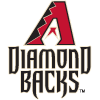 Gabriel Moreno, Diamondbacks: Moreno began the offseason with plenty of pedigree but an unclear path to playing time, as he shared a depth chart with Alejandro Kirk and Danny Jansen. After being traded to Arizona in late December, however, his only obstacle to at-bats is Carson Kelly, who's little more than capable in his best seasons and is coming off a down year. Moreno's prospect profile was driven by his excellent hit tool, and he showed that off in his 25-game debut last year, hitting .319 while striking out just 11.0 percent of the time. ATC, Steamer and THE BAT X all project Moreno for the second-highest batting average among all backstops, trailing only Kirk in all three cases, a remarkable mark for such an inexperienced hitter. While Moreno's contact skills are in little doubt, it remains unclear how much power he'll add in his age-23 season. He managed just one homer and a 3.3 percent barrel rate in his brief debut last season and added just three more homers in 62 games at the Triple-A level.
Gabriel Moreno, Diamondbacks: Moreno began the offseason with plenty of pedigree but an unclear path to playing time, as he shared a depth chart with Alejandro Kirk and Danny Jansen. After being traded to Arizona in late December, however, his only obstacle to at-bats is Carson Kelly, who's little more than capable in his best seasons and is coming off a down year. Moreno's prospect profile was driven by his excellent hit tool, and he showed that off in his 25-game debut last year, hitting .319 while striking out just 11.0 percent of the time. ATC, Steamer and THE BAT X all project Moreno for the second-highest batting average among all backstops, trailing only Kirk in all three cases, a remarkable mark for such an inexperienced hitter. While Moreno's contact skills are in little doubt, it remains unclear how much power he'll add in his age-23 season. He managed just one homer and a 3.3 percent barrel rate in his brief debut last season and added just three more homers in 62 games at the Triple-A level.
Corner Infield
| Player | Team | Pos | ADP Through 2/23 | ADP Since 2/24 | Diff |
|---|---|---|---|---|---|
| Wil Myers | CIN | 1B/OF | 341.3 | 238.5 | -102.8 |
| Jordan Walker | STL | 3B | 238.8 | 158.7 | -80.2 |
| Brandon Belt | TOR | 1B | 485.4 | 414.2 | -71.3 |
| Brendan Donovan | STL | 2B/3B/OF | 333.2 | 275.9 | -57.2 |
| Isaac Paredes | TB | 1B/2B/3B | 364.2 | 307.2 | -57.0 |
 Jordan Walker, Cardinals: Walker has been the talk of the spring. At the beginning of the offseason, it wasn't clear that he was anything more than a stash candidate, but it's since become apparent that he has a very good chance of breaking camp in the big leagues. He won't turn 21 until late May and has yet to play above Double-A, but he also has a prototypical power hitter's frame at 6-foot-5, with FanGraphs giving him 80-grade potential game power. He also struck out a very reasonable 21.6 percent of the time at the Double-A level and added 22 steals in 119 games. The potential is huge for Walker, and it's sending him flying up draft boards despite the fact that his question marks extend beyond his age and inexperience. He's primarily a third baseman but is blocked there by Nolan Arenado, and while he's in the process of converting to the outfield, the Cardinals have quality options there as well in Tyler O'Neill, Lars Nootbaar and Dylan Carlson. That's without even considering the shoulder injury Walker sustained after sliding headfirst into second base Saturday. He won't require an MRI, and the latest news as of this writing is trending in an encouraging direction, but it's at minimum something to monitor.
Jordan Walker, Cardinals: Walker has been the talk of the spring. At the beginning of the offseason, it wasn't clear that he was anything more than a stash candidate, but it's since become apparent that he has a very good chance of breaking camp in the big leagues. He won't turn 21 until late May and has yet to play above Double-A, but he also has a prototypical power hitter's frame at 6-foot-5, with FanGraphs giving him 80-grade potential game power. He also struck out a very reasonable 21.6 percent of the time at the Double-A level and added 22 steals in 119 games. The potential is huge for Walker, and it's sending him flying up draft boards despite the fact that his question marks extend beyond his age and inexperience. He's primarily a third baseman but is blocked there by Nolan Arenado, and while he's in the process of converting to the outfield, the Cardinals have quality options there as well in Tyler O'Neill, Lars Nootbaar and Dylan Carlson. That's without even considering the shoulder injury Walker sustained after sliding headfirst into second base Saturday. He won't require an MRI, and the latest news as of this writing is trending in an encouraging direction, but it's at minimum something to monitor.
Middle Infield
| Player | Team | Pos | ADP Through 2/23 | ADP Since 2/24 | Diff |
|---|---|---|---|---|---|
| Anthony Volpe | NYY | SS | 447.2 | 331.5 | -115.7 |
| Elvis Andrus | CWS | SS | 415.2 | 311.0 | -104.2 |
| Oswald Peraza | NYY | SS | 370.2 | 282.3 | -87.9 |
| Brendan Donovan | STL | 2B/3B/OF | 333.2 | 275.9 | -57.2 |
| Isaac Paredes | TB | 1B/2B/3B | 364.2 | 307.2 | -57.0 |
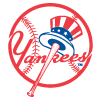 Anthony Volpe and
Anthony Volpe and  Oswald Peraza, Yankees: It's unusual to see two contestants in the same job battle rise at the same time, so we'll tackle both together here. Their mutual rise may be due in large part to the fact that the Yankees declined to bring in any of the four shortstops who signed nine-figure deals over the winter, meaning it's now clear that one of these two should be manning the position for most of the year. Volpe has more prospect pedigree, but he isn't on the 40-man roster, while Peraza has already made his big-league debut and is far from a non-prospect. If the decision were made purely based on spring stats, Volpe has the clear edge thus far. He has a 1.103 OPS and a pair of homers through 10 Grapefruit League games, while Peraza owns a .568 OPS and has yet to clear the fence in seven contests. That said, it's unwise to draw significant conclusions from such a tiny sample, especially as Peraza has been slowed by a minor foot issue and at least has a 3:3 BB:K, even if the hits aren't falling.
Oswald Peraza, Yankees: It's unusual to see two contestants in the same job battle rise at the same time, so we'll tackle both together here. Their mutual rise may be due in large part to the fact that the Yankees declined to bring in any of the four shortstops who signed nine-figure deals over the winter, meaning it's now clear that one of these two should be manning the position for most of the year. Volpe has more prospect pedigree, but he isn't on the 40-man roster, while Peraza has already made his big-league debut and is far from a non-prospect. If the decision were made purely based on spring stats, Volpe has the clear edge thus far. He has a 1.103 OPS and a pair of homers through 10 Grapefruit League games, while Peraza owns a .568 OPS and has yet to clear the fence in seven contests. That said, it's unwise to draw significant conclusions from such a tiny sample, especially as Peraza has been slowed by a minor foot issue and at least has a 3:3 BB:K, even if the hits aren't falling.
Outfield
| Player | Team | Pos | ADP Through 2/23 | ADP Since 2/24 | Diff |
|---|---|---|---|---|---|
| Adam Duvall | BOS | OF | 473.1 | 349.2 | -123.9 |
| Wil Myers | CIN | 1B/OF | 341.3 | 238.5 | -102.8 |
| Oscar Colas | CWS | OF | 384.4 | 285.3 | -99.1 |
| Brendan Donovan | STL | 2B/3B/OF | 333.2 | 275.9 | -57.2 |
| Andrew McCutchen | PIT | OF | 446.4 | 390.8 | -55.6 |
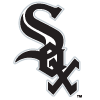 Oscar Colas, White Sox: Colas has risen up draft boards as it became clear that the only obstacle standing between him and an Opening Day start in right field is Gavin Sheets, who shouldn't be too tough to beat. Colas isn't on Chicago's 40-man roster, but he's been given every chance to win the job and is impressing so far this spring, posting a 1.052 OPS and a pair of homers in 14 games while striking out just once. Even with the clear path and the strong spring, however, Colas' fantasy value is tough to pin down due to his unusual career path. He played in Cuba at age 17 and 18 before moving to Japan, where he was stuck in the minors, appearing in just seven NPB games. He didn't play in a game anywhere in 2020 or 2021 before signing with the White Sox last year, where he went on to hit .314/.371/.524 with 23 homers in 117 games across the three highest levels of the minors. That's a promising performance, but just seven of those games came in Triple-A, and his 26.2 percent strikeout rate and 6.1 percent walk rate at the two highest levels raises concerns that his plate discipline could sink his profile in the big leagues.
Oscar Colas, White Sox: Colas has risen up draft boards as it became clear that the only obstacle standing between him and an Opening Day start in right field is Gavin Sheets, who shouldn't be too tough to beat. Colas isn't on Chicago's 40-man roster, but he's been given every chance to win the job and is impressing so far this spring, posting a 1.052 OPS and a pair of homers in 14 games while striking out just once. Even with the clear path and the strong spring, however, Colas' fantasy value is tough to pin down due to his unusual career path. He played in Cuba at age 17 and 18 before moving to Japan, where he was stuck in the minors, appearing in just seven NPB games. He didn't play in a game anywhere in 2020 or 2021 before signing with the White Sox last year, where he went on to hit .314/.371/.524 with 23 homers in 117 games across the three highest levels of the minors. That's a promising performance, but just seven of those games came in Triple-A, and his 26.2 percent strikeout rate and 6.1 percent walk rate at the two highest levels raises concerns that his plate discipline could sink his profile in the big leagues.
Starting Pitcher
| Player | Team | ADP Through 2/23 | ADP Since 2/24 | Diff |
|---|---|---|---|---|
| Brandon Pfaadt | ARI | 449.1 | 357.6 | -91.5 |
| Kyle Bradish | BAL | 411.0 | 320.4 | -90.6 |
| Domingo German | NYY | 496.5 | 413.7 | -82.8 |
| MacKenzie Gore | WAS | 428.5 | 352.0 | -76.5 |
| Kenta Maeda | MIN | 361.5 | 288.4 | -73.1 |
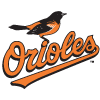 Kyle Bradish, Orioles: Bradish doesn't even have a locked-in spot in the Baltimore rotation, but he's caught the eye of drafters nonetheless. He was never a top prospect, and his 4.90 ERA in 23 starts as a rookie last year was unimpressive, but there's reason nonetheless to buy in even at the elevated price. For starters, his 3.28 ERA and 3.73 FIP in 13 starts to finish last season after returning from a shoulder injury represented a big improvement from his 7.38 ERA and 5.57 FIP prior to the injury. Additionally, his career 29.1 percent strikeout rate in the minors suggests the potential for a meaningful jump from his 21.8 percent mark as a rookie. Much of Bradish's fate rests on his slider, a pitch that looked as good as Justin Verlander's per Stuff+, a metric that grades pitches based on velocity and movement rather than results. Bradish is seemingly happy to lean heavily on the pitch, as he increased its usage from 26.0 percent to 32.5 percent after his return from the injured list, leading to much better results.
Kyle Bradish, Orioles: Bradish doesn't even have a locked-in spot in the Baltimore rotation, but he's caught the eye of drafters nonetheless. He was never a top prospect, and his 4.90 ERA in 23 starts as a rookie last year was unimpressive, but there's reason nonetheless to buy in even at the elevated price. For starters, his 3.28 ERA and 3.73 FIP in 13 starts to finish last season after returning from a shoulder injury represented a big improvement from his 7.38 ERA and 5.57 FIP prior to the injury. Additionally, his career 29.1 percent strikeout rate in the minors suggests the potential for a meaningful jump from his 21.8 percent mark as a rookie. Much of Bradish's fate rests on his slider, a pitch that looked as good as Justin Verlander's per Stuff+, a metric that grades pitches based on velocity and movement rather than results. Bradish is seemingly happy to lean heavily on the pitch, as he increased its usage from 26.0 percent to 32.5 percent after his return from the injured list, leading to much better results.
Relief Pitcher
| Player | Team | ADP Through 2/23 | ADP Since 2/24 | Diff |
|---|---|---|---|---|
| Reynaldo Lopez | CWS | 514.8 | 367.0 | -147.8 |
| Alex Lange | DET | 380.9 | 242.8 | -138.1 |
| Kendall Graveman | CWS | 402.9 | 306.0 | -96.9 |
| Trevor May | OAK | 457.5 | 388.6 | -68.9 |
| Craig Kimbrel | PHI | 352.2 | 295.2 | -57.0 |
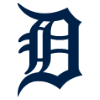 Alex Lange, Tigers: The Tigers haven't officially named a closer, but Lange's draft price reflects the fact that he's widely assumed to have the role. Much of Lange's appeal comes from the fact that Detroit simply doesn't have anyone else who looks remotely well-suited for the job. Gregory Soto, Andrew Chafin, Joe Jimenez and Michael Fulmer are all playing elsewhere, leaving Will Vest as the only pitcher on the roster who recorded a save last season. Vest's 4.00 ERA and 23.2 percent strikeout rate last season aren't closer material, and Jason Foley (3.88 ERA, 16.8 percent strikeout rate) and Jose Cisnero (1.08 ERA but a 5.19 SIERA and 21.9 percent strikeout rate) are poor fits as well. Barring a sudden push from non-roster invitee Trevor Rosenthal, who's thrown 39 MLB innings across the last five seasons and won't be ramped up by Opening Day, Lange looks like the only viable option. His 11.4 percent walk rate last season wasn't good, but his 30.3 percent strikeout rate and 55.6 percent groundball rate helped him to a 3.45 ERA and 3.09 SIERA.
Alex Lange, Tigers: The Tigers haven't officially named a closer, but Lange's draft price reflects the fact that he's widely assumed to have the role. Much of Lange's appeal comes from the fact that Detroit simply doesn't have anyone else who looks remotely well-suited for the job. Gregory Soto, Andrew Chafin, Joe Jimenez and Michael Fulmer are all playing elsewhere, leaving Will Vest as the only pitcher on the roster who recorded a save last season. Vest's 4.00 ERA and 23.2 percent strikeout rate last season aren't closer material, and Jason Foley (3.88 ERA, 16.8 percent strikeout rate) and Jose Cisnero (1.08 ERA but a 5.19 SIERA and 21.9 percent strikeout rate) are poor fits as well. Barring a sudden push from non-roster invitee Trevor Rosenthal, who's thrown 39 MLB innings across the last five seasons and won't be ramped up by Opening Day, Lange looks like the only viable option. His 11.4 percent walk rate last season wasn't good, but his 30.3 percent strikeout rate and 55.6 percent groundball rate helped him to a 3.45 ERA and 3.09 SIERA.
Fallers
Catchers
| Player | Team | ADP Through 2/23 | ADP Since 2/24 | Diff |
|---|---|---|---|---|
| Bo Naylor | CLE | 329.4 | 507.1 | 177.7 |
| Gary Sanchez | MIN | 404.5 | 544.5 | 140.1 |
| Carson Kelly | ARI | 439.3 | 543.8 | 104.6 |
| Endy Rodriguez | PIT | 444.4 | 540.4 | 96.0 |
| Nick Fortes | MIA | 360.6 | 447.4 | 86.9 |
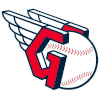 Bo Naylor, Guardians: Early in draft season, the path seemed clear for Naylor to open the season as Cleveland's top catcher, with last year's backstops Austin Hedges and Luke Maile both heading elsewhere. Even after the Guardians signed Mike Zunino in mid-December, Naylor still seemed to have a chance to compete for the job, as it was far from clear how smoothly Zunino's recovery from thoracic outlet surgery would go. Zunino hasn't exactly impressed this spring, posting a .568 OPS in seven games, but the Guardians had already made up their minds, optioning Naylor to Triple-A Columbus on Friday. Naylor's bat looks very much ready, as he hit .263/.392/.496 with 21 homers and 20 steals across the two highest levels of the minors last year, but his glove has received below-average grades as a prospect. (The five steals that Great Britain managed against Naylor and Team Canada on Sunday back that up.) Given the Guardians deployed Hedges as their primary catcher the last two seasons despite his .171/.231/.278 slash line over that stretch, it's clear their tastes skew strongly toward defense behind the plate, so Naylor could find a tougher time earning a role in Cleveland than he would elsewhere.
Bo Naylor, Guardians: Early in draft season, the path seemed clear for Naylor to open the season as Cleveland's top catcher, with last year's backstops Austin Hedges and Luke Maile both heading elsewhere. Even after the Guardians signed Mike Zunino in mid-December, Naylor still seemed to have a chance to compete for the job, as it was far from clear how smoothly Zunino's recovery from thoracic outlet surgery would go. Zunino hasn't exactly impressed this spring, posting a .568 OPS in seven games, but the Guardians had already made up their minds, optioning Naylor to Triple-A Columbus on Friday. Naylor's bat looks very much ready, as he hit .263/.392/.496 with 21 homers and 20 steals across the two highest levels of the minors last year, but his glove has received below-average grades as a prospect. (The five steals that Great Britain managed against Naylor and Team Canada on Sunday back that up.) Given the Guardians deployed Hedges as their primary catcher the last two seasons despite his .171/.231/.278 slash line over that stretch, it's clear their tastes skew strongly toward defense behind the plate, so Naylor could find a tougher time earning a role in Cleveland than he would elsewhere.
Corner Infield
| Player | Team | Pos | ADP Through 2/23 | ADP Since 2/24 | Diff |
|---|---|---|---|---|---|
| Matt Mervis | CHC | 1B | 327.1 | 473.8 | 146.7 |
| Gio Urshela | LAA | 3B | 440.5 | 526.7 | 86.1 |
| Luis Rengifo | LAA | 2B/3B | 303.8 | 352.4 | 48.6 |
| Eduardo Escobar | NYM | 3B | 404.9 | 447.3 | 42.4 |
| Wilmer Flores | SF | 1B/2B/3B | 359.6 | 398.4 | 38.7 |
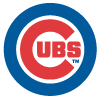 Matt Mervis, Cubs: As with Naylor, Mervis entered the winter with a seemingly clear path to a major-league role. He had little left to prove in the minors after hitting .297/.383/.593 for Triple-A Iowa last season, and the Cubs got nothing at first base last season from Frank Schwindel, Alfonso Rivas and P.J. Higgins, all of whom have left the organization. The Cubs apparently felt otherwise, as they've since brought in Trey Mancini, Eric Hosmer and Edwin Rios. Mervis isn't on the 40-man roster, so the odds are stacked against him breaking camp in the majors. His .494 OPS in eight spring games before leaving to join Israel for the World Baseball Classic may have wiped out whatever was left of his chances. He's still worth considering late in drafts and remains a viable stash candidate, as it's easy to see Hosmer playing his way out of a job by the end of April, with Mervis likely the beneficiary if he manages another strong month in Iowa. If Mervis is as good as his numbers last year suggest, he'll be starting at Wrigley Field before too long, but it's tough to take him at his previous price given that it's unknown when he'll debut.
Matt Mervis, Cubs: As with Naylor, Mervis entered the winter with a seemingly clear path to a major-league role. He had little left to prove in the minors after hitting .297/.383/.593 for Triple-A Iowa last season, and the Cubs got nothing at first base last season from Frank Schwindel, Alfonso Rivas and P.J. Higgins, all of whom have left the organization. The Cubs apparently felt otherwise, as they've since brought in Trey Mancini, Eric Hosmer and Edwin Rios. Mervis isn't on the 40-man roster, so the odds are stacked against him breaking camp in the majors. His .494 OPS in eight spring games before leaving to join Israel for the World Baseball Classic may have wiped out whatever was left of his chances. He's still worth considering late in drafts and remains a viable stash candidate, as it's easy to see Hosmer playing his way out of a job by the end of April, with Mervis likely the beneficiary if he manages another strong month in Iowa. If Mervis is as good as his numbers last year suggest, he'll be starting at Wrigley Field before too long, but it's tough to take him at his previous price given that it's unknown when he'll debut.
Middle Infield
| Player | Team | Pos | ADP Through 2/23 | ADP Since 2/24 | Diff |
|---|---|---|---|---|---|
| Gavin Lux | LAD | 2B/OF | 233.1 | 671.0 | 437.8 |
| Trevor Story | BOS | 2B | 363.2 | 672.4 | 309.2 |
| Brendan Rodgers | COL | 2B | 328.8 | 542.1 | 273.3 |
| Nick Gordon | MIN | 2B/OF | 287.9 | 376.7 | 88.8 |
| Luis Rengifo | LAA | 2B/3B | 303.8 | 352.4 | 48.6 |
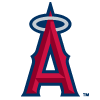 Luis Rengifo, Angels: Injuries have taken a big toll in the middle infield, specifically at second base. The first three players listed above are set to miss all or a significant portion of the upcoming season, and Gordon has dealt with a high-ankle sprain this spring. Rengifo's fall is the only one that isn't injury-related, and I've listed it here specifically to say I disagree with it. The Angels infield is full of similar players who are competent but not the most exciting, and the presence of Ohtani means those infielders are stuck fighting for four rather than five spots. But the defensive versatility of most of those Angels infielders — Rengifo, Brandon Drury, Gio Urshela and David Fletcher — creates a situation where whichever hitters are healthy and performing well will start most games. Rengifo is a switch hitter who makes a lot of contact (15.5 percent strikeout rate last year) and has shown the ability to play a capable shortstop, all of which gives him an excellent floor. The Angels are also open to him spending time in the outfield, giving him another path to at-bats. He doesn't come with notable injury concerns, and if he hits well enough to make your lineup, he'll be in the Angels' lineup as well.
Luis Rengifo, Angels: Injuries have taken a big toll in the middle infield, specifically at second base. The first three players listed above are set to miss all or a significant portion of the upcoming season, and Gordon has dealt with a high-ankle sprain this spring. Rengifo's fall is the only one that isn't injury-related, and I've listed it here specifically to say I disagree with it. The Angels infield is full of similar players who are competent but not the most exciting, and the presence of Ohtani means those infielders are stuck fighting for four rather than five spots. But the defensive versatility of most of those Angels infielders — Rengifo, Brandon Drury, Gio Urshela and David Fletcher — creates a situation where whichever hitters are healthy and performing well will start most games. Rengifo is a switch hitter who makes a lot of contact (15.5 percent strikeout rate last year) and has shown the ability to play a capable shortstop, all of which gives him an excellent floor. The Angels are also open to him spending time in the outfield, giving him another path to at-bats. He doesn't come with notable injury concerns, and if he hits well enough to make your lineup, he'll be in the Angels' lineup as well.
Outfield
| Player | Team | Pos | ADP Through 2/23 | ADP Since 2/24 | Diff |
|---|---|---|---|---|---|
| Gavin Lux | LAD | 2B/OF | 233.1 | 671.0 | 437.8 |
| Tommy Pham | NYM | OF | 447.8 | 554.1 | 106.3 |
| Nick Gordon | MIN | 2B/OF | 287.9 | 376.7 | 88.8 |
| Randal Grichuk | COL | OF | 262.9 | 346.7 | 83.7 |
| Leody Taveras | TEX | OF | 439.7 | 518.2 | 78.5 |
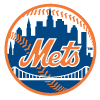 Tommy Pham, Mets: With every other fall in this section again being related to injury, I'll repeat what I did with Rengifo and discuss how I'm not sure Pham should actually be falling. The Mets have an excellent and deep roster, but it can't be overstated how old the group is. The only two likely starters younger than 30 are Pete Alonso (28) and Francisco Lindor (29), and the three starting outfielders average 32.7 years old. Injuries are likely to hit this team harder than the average roster, which is why the Mets brought in quality second-stringers like Pham. He's 35 years old, so there's no guarantee he stays healthy longer than do the guys in front of him, but he's averaged 149.5 games over the last two seasons, so durability hasn't been a major problem lately. Last season was a disappointment at the plate (.236/.312/.374) and during batting practice, as he served a three-game suspension for slapping Joc Pederson in a pregame dispute over fantasy football. But go back just one year prior and he showcased a very well-rounded skill set, posting a 10.0 percent barrel rate, a 13.9 percent walk rate, 15 homers and 14 steals for the Padres. If Pham has one of his good seasons, he'll find his way into a strong lineup on a regular basis eventually. You may find better alternatives with guaranteed playing time from day one in most formats, but he's now an even better bargain in deeper leagues.
Tommy Pham, Mets: With every other fall in this section again being related to injury, I'll repeat what I did with Rengifo and discuss how I'm not sure Pham should actually be falling. The Mets have an excellent and deep roster, but it can't be overstated how old the group is. The only two likely starters younger than 30 are Pete Alonso (28) and Francisco Lindor (29), and the three starting outfielders average 32.7 years old. Injuries are likely to hit this team harder than the average roster, which is why the Mets brought in quality second-stringers like Pham. He's 35 years old, so there's no guarantee he stays healthy longer than do the guys in front of him, but he's averaged 149.5 games over the last two seasons, so durability hasn't been a major problem lately. Last season was a disappointment at the plate (.236/.312/.374) and during batting practice, as he served a three-game suspension for slapping Joc Pederson in a pregame dispute over fantasy football. But go back just one year prior and he showcased a very well-rounded skill set, posting a 10.0 percent barrel rate, a 13.9 percent walk rate, 15 homers and 14 steals for the Padres. If Pham has one of his good seasons, he'll find his way into a strong lineup on a regular basis eventually. You may find better alternatives with guaranteed playing time from day one in most formats, but he's now an even better bargain in deeper leagues.
Starting Pitcher
| Player | Team | ADP Through 2/23 | ADP Since 2/24 | Diff |
|---|---|---|---|---|
| Frankie Montas | NYY | 332.6 | 628.8 | 296.2 |
| Aaron Ashby | MIL | 296.8 | 529.7 | 232.9 |
| Lance McCullers | HOU | 222.0 | 360.7 | 138.7 |
| Brayan Bello | BOS | 370.9 | 471.1 | 100.3 |
| Jose Quintana | NYM | 369.6 | 463.3 | 93.8 |
| Mike Soroka | ATL | 442.7 | 531.4 | 88.7 |
| Bailey Ober | MIN | 311.8 | 375.9 | 64.0 |
| Tyler Glasnow | STL | 87.9 | 146.1 | 58.3 |
| Braxton Garrett | MIA | 437.6 | 484.7 | 47.1 |
| Ranger Suarez | PHI | 296.6 | 330.8 | 34.1 |
The top five falling starters are all dealing with injuries, so I expanded this list to 10, which added three more pitchers carrying injury tags. Pitchers get hurt a lot, which is one reason I like to open the year with nearly all of my bench spots dedicated to arms in most formats. You often need to end the draft with well more than enough pitchers you're comfortable with just to make sure you hit midseason still able to fill a lineup, and any excess just gives you better streaming options.
 Braxton Garrett, Marlins: I've been targeting Garrett throughout my early drafts, as his combination of above-average skills in his age-24 season last year was impressive. In 17 starts, he recorded a 24.1 percent strikeout rate, 6.4 percent walk rate and 47.8 percent groundball rate. Here's the full list of pitchers who matched those three rates stats in at least as many starts last year:
Braxton Garrett, Marlins: I've been targeting Garrett throughout my early drafts, as his combination of above-average skills in his age-24 season last year was impressive. In 17 starts, he recorded a 24.1 percent strikeout rate, 6.4 percent walk rate and 47.8 percent groundball rate. Here's the full list of pitchers who matched those three rates stats in at least as many starts last year:
| Player | Recent ADP | Team | Starts | K% | BB% | GB% |
|---|---|---|---|---|---|---|
| Shane McClanahan | 41.5 | TB | 28 | 30.3 | 5.9 | 50.2 |
| Shane Bieber | 55.7 | CLE | 31 | 25.0 | 4.6 | 48.2 |
| Brady Singer | 188.9 | KCR | 24 | 24.2 | 5.6 | 49.0 |
| Braxton Garrett | 484.7 | MIA | 17 | 24.1 | 6.4 | 47.8 |
Garrett is of course the weakest of this group, as is the nature of arbitrary endpoints, but it's a good group with which to show similarities. The other difference to that trio is of course Garrett's lack of a guaranteed role. If the Marlins go with a five-man rotation, he's battling it out with the talented Edward Cabrera. But Garrett has multiple paths to a rotation spot. He could outpitch the erratic Cabrera — the owner of a career 12.7 percent walk rate — any of the starters ahead of him could get injured, or the Marlins could simply begin the year with six starters.
Relief Pitcher
| Player | Team | ADP Through 2/23 | ADP Since 2/24 | Diff |
|---|---|---|---|---|
| Gregory Soto | PHI | 385.5 | 655.4 | 269.9 |
| Liam Hendriks | CWS | 345.2 | 524.3 | 179.1 |
| Rafael Montero | HOU | 376.9 | 434.5 | 57.6 |
| Giovanny Gallegos | STL | 328.7 | 376.9 | 48.2 |
| Dylan Floro | MIA | 309.2 | 360.2 | 51.0 |
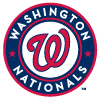 Dylan Floro, Marlins: After cheating the format for the past three positions by writing up players whose falls I disagreed with, I'll get back on track to finish things off. The Marlins have made it explicit that they're going with a closer committee, and Floro doesn't have many of the things I look for when betting on a reliever to rise to the top in such a situation. Here are some notable Marlins relievers alongside their projected ERA (per ATC) and three factors that often hint at future save chances:
Dylan Floro, Marlins: After cheating the format for the past three positions by writing up players whose falls I disagreed with, I'll get back on track to finish things off. The Marlins have made it explicit that they're going with a closer committee, and Floro doesn't have many of the things I look for when betting on a reliever to rise to the top in such a situation. Here are some notable Marlins relievers alongside their projected ERA (per ATC) and three factors that often hint at future save chances:
| Player | Pos | ADP | Proj. ERA | Career Saves | 2022 K% | 2022 FB Velo |
|---|---|---|---|---|---|---|
| Dylan Floro | RHP | 360.2 | 3.59 | 25 | 21.8 | 92.5 |
| A.J. Puk | LHP | 493.4 | 3.63 | 4 | 27.0 | 96.9 |
| Matt Barnes | RHP | 666.7 | 4.10 | 47 | 19.3 | 95.2 |
| Tanner Scott | LHP | 687.6 | 3.62 | 21 | 31.1 | 96.9 |
| Steven Okert | LHP | N/A | 3.62 | 0 | 28.5 | 93.7 |
| Huascar Brazoban | RHP | N/A | 3.74 | 0 | 28.4 | 97.4 |
| JT Chargois | RHP | N/A | 3.77 | 0 | 19.8 | 95.6 |
It's probably correct that Floro should go before the rest of the Miami bullpen, in part because the left-handed potential committee members are on the whole stronger than the rest of the righties, but his large ADP lead even after his recent drop overstates the gap between him and the rest of the group. Nothing in that table suggests that Floro looks considerably more closerish than your average Marlins reliever, so I don't want to count on the 32-year-old getting more than a handful of saves.









